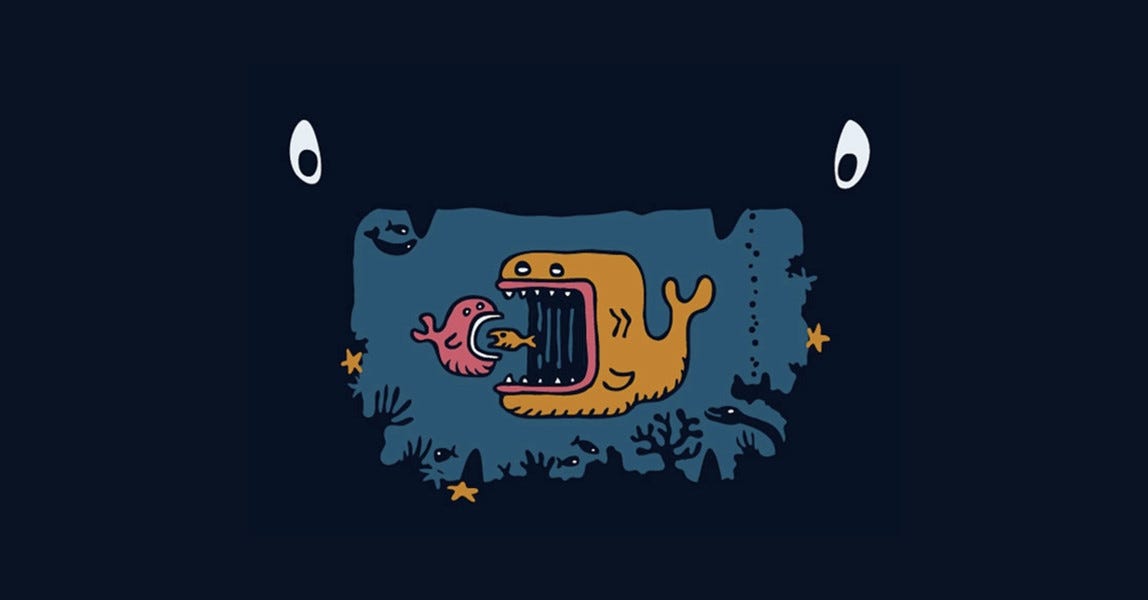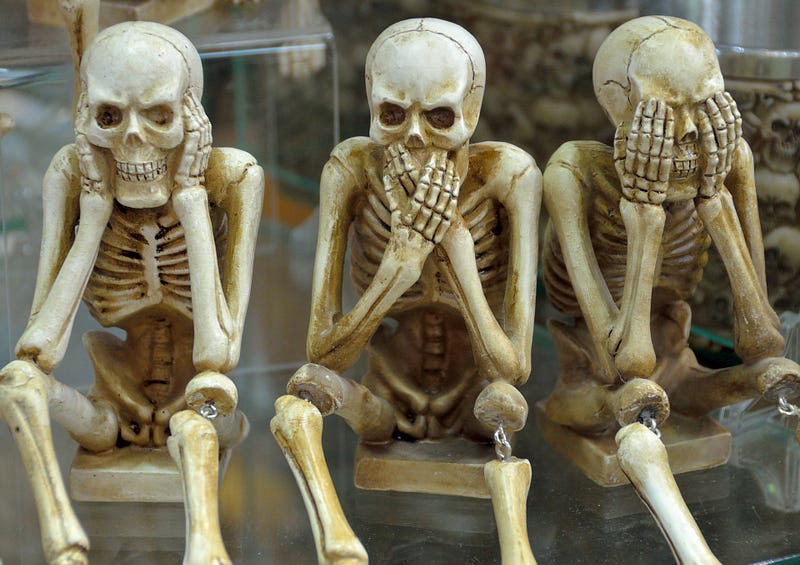
“Collective fear stimulates herd instinct, and tends to produce ferocity toward those who are not regarded as members of the herd.” ― Bertrand Russell
Our tribal instincts can be traced back to the dawn of humanity. Back then disobedience and non-adherence to expected group behaviours meant (r)ejection from the tribe. Ejection from the tribe meant battling the elements alone. Battling the elements alone often resulted in death.
Our behaviour is influenced by where we are born, what we are taught, what we learn and what we experience, in short, nurture matters. While we have evolved magnificently and the thinking parts of our brain have greatly advanced, we are still governed by the more ancient parts of our brain, often more than we realise, often more than we realise or care to admit. We are still animals, just with more advanced brains.
This Thursday Thought examines the threat of ostracism and how this is used an invisible stick to keep people “in line”. To many changemakers they simply cannot toe the line, they especially reject obedience in the face of injustice. They would rather leave than drink the corporate Kool-Aid.
Pecking Order

Norwegian zoologist and comparative psychologist Thorleif Schjelderup-Ebbe first described the pecking order of chickens in his PhD dissertation in 1921. He noted that pecking was a measure of establishing dominance and leadership order amongst hens. This social hierarchy established which hens would get food first, while the others waited in line.
Pay to Stay
Author of “The Ten Types of Human”, the excellent Dexter Dias QC was our recent guest on the innovation show and shared the following fascinating study conducted by Dr Marian Wong. Wong studied the social behaviours of the coral-dwelling goby fish, which live in close-knit social groups amongst the coral reefs off Queensland, Australia.
These goby tribes defend their small patch of coral from predators and other goby tribes, working together with the clear understanding that they must obey social norms or risk being evicted from their own patch, eviction signalled certain death. In Dr Wong’s words: “Once they’re outside the coral, they’re basically eaten. Stay in the coral, you’re safe. Out? Eaten. So it’s pretty serious. It’s a credible threat. The coral is safety. The group is. But there’s no such thing for fish as a free lunch. They have to pay to stay.”
Pay to stay?
At what cost?
The Price of Conformity?
The Fish Parade
Wong noticed that the fish would often line up in a very precise pattern. In goby fish societies there is a dominant male and female followed by a number of females. When the group “lined up” they did so by decreasing size.
But why?
The fish were lining up in order of decreasing size to show that they were respecting social hierarchy and not threatening the dominance of the the next biggest fish. Remarkably, they remained exactly 0.93 the size of the next fish in the hierarchy. It is important to note that size matters greatly to goby, the unrestrained and unmonitored growth of subordinates is considered a threat to dominant fish.
If these fish featured in Orwell’s Animal Farm the eight commandment might read “No goby shall get too big for it’s boots!”.
“So when they’re lining up, they’re actually evaluating one another. Literally, they’re sizing each other up.” — Dr Marian Wong

It is also worth noting that smaller fish grow more rapidly than larger ones, so the smaller fish have to make a concerted effort to regulate their eating to stay within the social “pecking order”.
So the fish self-regulated their growth to remain small and unthreatening, by doing so the could enjoy the collective benefits of group social life. They also fall in line to ensure they do not run the gauntlet of group ostracisation, which would not only mean social death, but physical death also.
Conformity at what Cost?

In 1951, psychologist Solomon Asch conducted a series of experiments on conformity.
Groups of eight participants took part in a simple task. All but one participant were party to this experiment. The true focus of the study was to track how the chosen subject would react to the behaviour of the other seven.
There were sets of two cards shown to all eight participants. One card had one line on it, while the other card had three lines labelled “A”, “B”, and “C” (as per below).
One of the “A”, “B”, “C” lines were the same length as the one on the first card. The other two lines were very clearly longer or shorter. The task was to choose which one matched.
To ensure we are on the same page, the answer below would be C.
Seven participants were coached on how to behave to the remaining participant or “subject”. The seven would give the correct response for an extended period and on others an incorrect answer. The group of eight was seated so that the subject always responded last.
The experiment aimed to measure how many subjects would change their answer to conform to the responses of the seven collaborators, despite it being wrong.
A sizeable minority of responses conformed to the seven collaborator’s (incorrect) answer (a total of 36.8 percent).
Naturally, the subjects were interviewed after the study, and the real aim of the study was revealed to them. The subjects said that often they were “just going along” because they did not want to stand out from the crowd
As Asch’s study shows many people will conform more to a unanimous group, even if that group is clearly wrong. They will just go along with it. They will be more likely to comply, to obey a command.
Corporate Ostracism
Digital, cultural and innovation changemakers must either report to a supportive CEO or sit on the corporate board to ensure they get company buy in. Without adequate positioning in the hierarchy they will struggle to transform the company.

Just like the goby protecting their patch, many corporate workers protect their position at all costs. While some will act in tight-knit groups like the goby fish protecting their departmental patch, others will be more like the Buckingham palace soldier protecting their “station”.
Thinking of their territory as a swim lane, they will go to any lengths (ahem, excuse the pun) to ensure that their patch is untouched and their power remains in tact. Such behaviour is very common in established organisations, where many of the workforce has been placed in a hierarchal position based on tenure, rather than merit. These people have most likely stopped learning, believing getting to the role was the goal.
In such organisations, these people can be extremely vindictive, toxic, Machiavellian and will ostracise, vilify and mentally bully the changemaker.
Some changemakers will find their power restricted or removed, this might come in the form of budget reduction, removal or even a diminishing of their role. Others will find that they stop receiving invites to meetings that they really should be running, or at a very minimum be attending. Others still find that they get assigned fools errands, tasks that really do not have any end goal. This lack of true purpose or meaning is enough to provoke most changemakers to leave the company they so wished to transform.
When I started this Thursday Thought blog some of my then-colleagues filed official complaints. I was asked to stop writing the Thursday Thought, which was only in its 8th week at the time, now 125 weeks ago! Next, they moved on to the innovation show which I had created and I was subsequently asked to stop doing it and to find another presenter. Finally, I was asked to stop collaborating across the company and indeed outside of it and to sit more often at my desk (even if it was only Facetime).
Why you may wonder? It is worth sharing that I did all the writing and recorded the show on my own time, as I still do today, it never interfered with my role, but only served to enhance it. So why was I asked to stop? I was getting too big for my boots. Even though this was beneficial for the company, it exposed others for their inaction. This is a trigger for corporate ostracism. So what to do?
I remember the day well… I go to the gym every morning before work. I had finished my sessions, finished my shower and looked in the mirror. I reflected how I had an easy role, I had a great pension, I had very little work stress, but I had no meaning. I handed in my notice later that day.
Best decision of my business career!
I am a true believer that the Universe does not let intentionally malignant people away with their behaviour. The law of reciprocity is a Universal law, we cannot escape, you get back what you put out. I realise now how that period was a phenomenally positive experience, it gave me context that I could not have learned through decades of study, it gave me scar tissue which I needed. Since I left, those who ostracised have all been either let go or intentionally placed on fallow pastures where they cannot hinder any changemakers.
A final word: The Need for Hierarchy
“Culture is the sum of what you permit and what you promote” — Richard Fagerlin
I wrote last week about the need for contrast. Like tension, hierarchy is often considered a negative phenomenon. Hierarchy creates inequality, which can also create resentment. However, we must equally recognise, that without hierarchy we would have chaos or even anarchy with everyone attempting to usurp their superior. We need the challenge of moving up the hierarchy respectfully, but purposefully. Without hierarchy we would have nothing to strive for. If we only got good, how would we know we have it? Consider the challenges of those who inherit great wealth, many struggle for meaning and purpose because they did not work for that wealth, they did not strive for it. (On a side note it is why we must not offer instant gratification to our children an deprive them of the struggle).
As Dexter Dias shared on the innovation show, sociality has limits. Living with other human beings is a phenomenal survival mechanism, but it represents an equally significant survival problem: the problem of living with other people!
Socialisation presents many benefits, but group living generates conflicts of interest between group members as they compete over limiting resources (like the chickens pecking over the who eats first). Thus, corporate leaders must consistently ask themselves the following questions:
Am I creating a team of giants or am I creating a team of dwarves?
Am I building my people, so they will build the company?
Am I hiring people who are better than me?
Do I have the self confidence to do so?
Are my people ostracising my changemakers?
Do I have their back?
Am I creating an environment where healthy, constructive debate is welcome?
Am I supporting the unreasonable ones…?
“The reasonable (wo)man adapts himself to the world; the unreasonable one persists in trying to adapt the world to himself. Therefore all progress depends on the unreasonable (wo)man.” — George Bernard Shaw
The reason I wrote this thought is for those who feel stuck, those who are well paid, well pensioned, but poorly purposed. There is a choice. This is an employees market, you will never regret doing it, but you will always regret not doing it. Do it!
On the innovation show episode 120: The Ten Types of Human: A New Understanding of Who We Are, and Who We Can Be with Dexter Dias QC.
The argument of this episode is that we’ve evolved a number of mental modules associated with characteristic types of human behaviour.
This show introduces ten people. In a way, we already know them. Only we don’t — not really. In a sense, they are us. Only they’re not entirely. They inform and shape the most important decisions in our lives. But you’re almost certainly unaware of their intervention. They are the Ten Types of Human. Who are they? What are they for? How did they get into your head?
We want to believe that there are some things we would never do. We want to believe that there are others we always would. But how can we be sure? What are our limits? Do we have limits? The answer lies with the Ten Types of Human: the people we become when we are faced with life’s most difficult decisions. But who or what are these Types? Where do they come from? How did they get into our heads?
More on Dexter here: https://thetentypesofhuman.com/about-dexter-dias/
Have a Listen:
Soundcloud https://lnkd.in/gBbTTuF
Spotify http://spoti.fi/2rXnAF4
iTunes https://apple.co/2gFvFbO
Tunein http://bit.ly/2rRwDad
iHeart http://bit.ly/2E4fhfl
